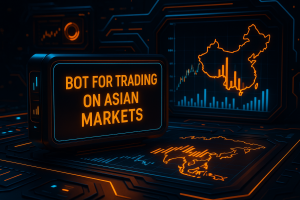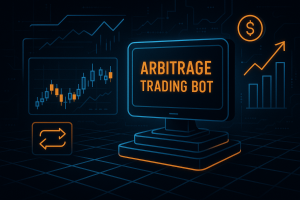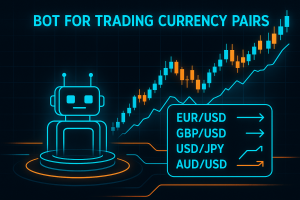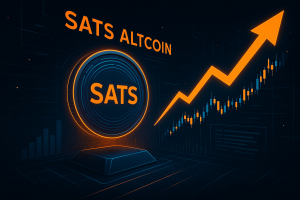Trading bot with training

A trading bot is a software programme that automates the trading of assets (stocks, cryptocurrencies, futures, etc.). Self-learning bots are capable of analysing data, identifying patterns, and adjusting their strategies based on experience. Unlike traditional algorithmic bots, they don’t follow strictly predefined rules; instead, they can modify their behaviour according to new information.
Data collection involves the bot analysing historical and real-time data, including price quotes, trading volumes, news, and macroeconomic indicators. For the model training, machine learning methods such as gradient boosting, neural networks, and deep learning are employed to uncover correlations and trends.
Decision-making is handled by the algorithm selecting the most suitable strategy based on market analysis. The bot’s optimisation and self-learning allow it to refine its approach depending on the success of previous trades.
The bot trains on labelled historical data where the results of past trades are already known, using algorithms like logistic regression, decision trees, and gradient boosting. Its applications include forecasting price movements and identifying patterns on charts. For example, a bot might be trained on five years’ worth of Bitcoin price data to predict the likelihood of a rise or fall.
Learning occurs through trial and error, with successful trades earning rewards and losing ones imposing penalties. The bot employs neural networks such as Deep Q-Networks (DQN) and Actor-Critic models. This allows it to adapt dynamically to changing market conditions and optimise strategies on the fly. For example, a bot trading in cryptocurrency markets might analyse its profit and adjust its strategy based on that experience.
Combining multiple methods helps achieve maximum efficiency. For instance, the bot might start with supervised learning to establish a baseline strategy and then incorporate reinforcement learning to adapt in real time. A typical example: predicting trend directions based on historical data (supervised learning), then refining its approach as new data comes in (reinforcement learning).
Adaptability is a key feature – the bot can adjust to evolving market conditions, enhancing its strategy with new information.
An important advantage is the absence of emotional bias – decisions are purely data-driven, removing human emotions such as fear or greed from the equation.
With lightning-fast execution, the bot can capitalise on short-term market opportunities that might be unreachable for manual traders.
Risk management is another crucial aspect – by analysing large volumes of data, the bot can detect potentially dangerous situations and steer clear of unprofitable trades.
Automation also saves time – traders can focus on strategic analysis rather than executing trades manually.
The range of strategies that a bot can pursue is broad – including scalping, trend trading, market-making, and arbitrage. Moreover, self-learning allows the bot to become more intelligent over time, continually refining its algorithms to boost profitability.
Trading bots with machine learning find applications across various sectors, from the stock market to cryptocurrencies. As AI technology continues to develop, these bots are becoming more accurate and reliable, making automated trading even more accessible and effective.
Category news: Product and Bot Features Security and Education Trading Strategies
-

How to install the trading bot
In today’s digital age, trading has long since moved beyond its traditional form. Increasingly, it’s not humans but algorithms – trading bots – that handle financial operations. These electronic assistants can trade around the clock, without fatigue, distraction, or emotion. However, for a bot to become truly effective, it must be installed and configured correctly. […]
-

Bot for trading on Asian markets
Cryptocurrencies – decentralised digital assets traded around the clock and across the globe – are drawing increasing attention. One of the most dynamic and active segments is the Asian crypto market. It is home to major exchanges, millions of retail investors, and cutting-edge blockchain projects. With trading velocity and volumes so high, manual control is […]
-

Arbitrage trading bot
The automation of trading processes is becoming increasingly popular. One of the most interesting and promising tools in this area is the arbitrage trading bot. This software algorithm, capable of executing trades without human intervention, represents a fusion of programming and financial analytics at a very high level. Arbitrage trading is a strategy in which […]
-

Bot for trading currency pairs
The world of financial markets is constantly evolving, with technology playing an ever-greater role each year. One of the most significant innovations in this space has been the trading bot – software capable of automatically buying and selling currencies according to predefined rules. These bots are especially popular on the Forex market, where currency pairs […]
Latest news
-

How to install the trading bot
In today’s digital age, trading has long since moved beyond its traditional form. Increasingly, it’s not humans but algorithms – trading bots – that handle financial operations. These electronic assistants can trade around the clock, without fatigue, distraction, or emotion. However, for a bot to become truly effective, it must be installed and configured correctly. […]
-

Bot for trading on Asian markets
Cryptocurrencies – decentralised digital assets traded around the clock and across the globe – are drawing increasing attention. One of the most dynamic and active segments is the Asian crypto market. It is home to major exchanges, millions of retail investors, and cutting-edge blockchain projects. With trading velocity and volumes so high, manual control is […]
-

SATS
SATS is a “meme” or experimental token built on the BRC-20 standard, designed to highlight its connection to Bitcoin and its smallest unit. Issued by an anonymous team, it doesn’t feature complex smart contracts like Ethereum tokens, but instead focuses on symbolism and crypto-culture. What backs it From a backing perspective, SATS has several defining […]
-

Arbitrage trading bot
The automation of trading processes is becoming increasingly popular. One of the most interesting and promising tools in this area is the arbitrage trading bot. This software algorithm, capable of executing trades without human intervention, represents a fusion of programming and financial analytics at a very high level. Arbitrage trading is a strategy in which […]

